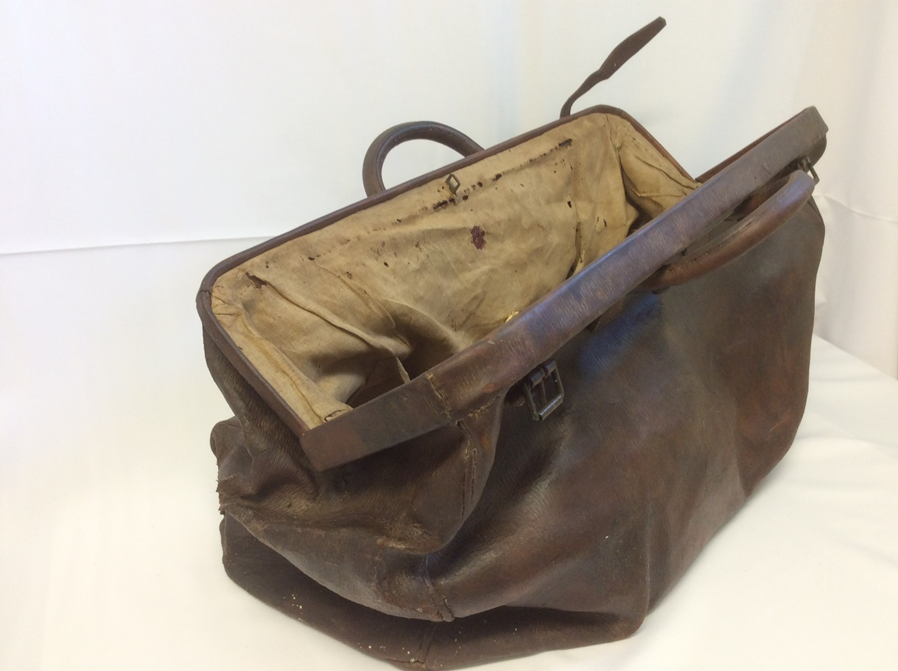Dr Foxton’s Gladstone Bag
Dr Harold Vernon Foxton was born in Stanthorpe in 1878 and died following gall bladder surgery in 1952. He graduated MBBS in Melbourne before returning to Brisbane. In 1910 he was appointed as the first medical superintendent at the Goodna asylum. As a Major in the Army medical corps, he landed at Gallipoli on day one, served at Lesbos and the Western Front where he met and later married Annie Bell who was serving in the Australian Army Nursing Service.

Dr Foxton went on to practice as an ENT surgeon in Ballow Chambers and at various hospitals. His medical bag containing many surgical instruments was recently gifted to the Museum by Victoria Foxton, his granddaughter. There were three doctors in the Foxton family, his son and daughter in law. Dr Harold Foxton began medical practice in the early 1900s and the contents of the bag reflected his special interest in ear nose and throat surgery with tonsillar snares and guillotines and various ENT instruments including a variable pitch tuning fork and a Politzer acoumeter together with mastoid chisels and nasal bone forceps.
The instruments were mainly manufactured from 1910 to 1930. They included items used in ophthalmology, anaesthetics and bronchoscopy with several instruments for laryngeal procedures but also included a pair of obstetric forceps and general surgical instruments dating up to the 1950s. It was a family collection rather than one doctor’s “tool-kit”. Possibly the capacious strong leather ‘Gladstone’ bag with brass fittings and a calico lining was simply a storage place for obsolete instruments as it is much larger than what would be needed usually for domiciliary visits unless significant home surgery was anticipated, a not unusual occurrence for the early years of this century. If used in medical practice it is more likely that the bag was for transferring personally owned instruments between various hospitals and clinics, probably pre-sterilised and wrapped in suitable sets for convenience and to save time.

